 W
WJohn T. Arundel was an English entrepreneur who was instrumental in the development of the mining of phosphate rock on the Pacific islands of Nauru and Banaba. Williams & Macdonald (1985) described J.T. Arundel as "a remarkable example of that mid-Victorian phenomenon, the upright, pious and adventurous Christian English businessman."
 W
WCelestial Empire was a long-lived medium clipper ship built in 1852 for the San Francisco trade. She met with a variety of mishaps characteristic for ships of her era. A second ship by this name set a legal precedent regarding damage done by sailing ships coming in to dock.
 W
WChallenger was an extreme clipper ship built in East Boston in 1853. She sailed in the San Francisco trade, and later in the guano trade in Peru.
 W
WChampion of the Seas was the second largest clipper ship destined for the Liverpool, England - Melbourne, Australia passenger service. Champion was ordered by James Baines of the Black Ball Line from Donald McKay. She was launched 19 April 1854 and was abandoned 3 January 1877, off Cape Horn.
 W
WThe Chincha Islands are a group of three small islands 21 kilometres (13 mi) off the southwest coast of Peru, to which they belong, near the town of Pisco. Since pre-Incan times they were of interest for their extensive guano deposits, but the supplies were mostly exhausted by 1874.
 W
WThe Ems was a 1,829 ton, iron sailing ship with a length of 270.7 feet (82.5 m), breadth of 39 feet (12 m) and depth of 22.5 feet (6.9 m).
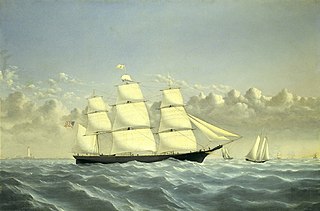 W
WGolden West was an 1852 extreme clipper built by Paul Curtis. The ship had a very active career in the California trade, the guano trade, the coolie trade, the Far East, and Australia. She made a record passage between Japan and San Francisco in 1856.
 W
WWhen launched in 1853, Great Republic was the largest wooden ship in the world. She shared this title with another American-built ship, the steamship Adriatic. She was also the largest full-rigged ship ever built in the United States.
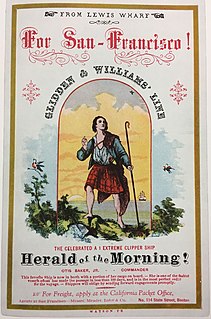 W
WHerald of the Morning was one of the few clipper ships with a passage to San Francisco in less than 100 days.
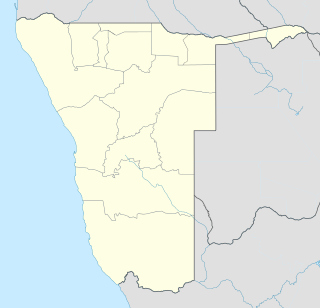 W
WIchaboe Island is a small rocky island off Namibia's Diamond Coast. It is recognised by BirdLife International as an Important Bird Area (IBAs) for its seabird breeding colonies.
 W
WKing Philip was a 19th-century clipper ship launched in 1856 and wrecked in 1878. The wreck of this ship is only rarely visible; very infrequently the timbers can be seen protruding from the sands of Ocean Beach, on the Pacific Ocean coast of San Francisco, California. The wreck is the "most complete remains of an American medium clipper." This is a shipwreck of one of many ships that were wrecked in and around San Francisco Bay.
 W
WKingfisher was an extreme clipper built in 1853 that sailed on the San Francisco route as well as to Hawaii on its way to China. It eventually sailed out of Uruguay. She was one of the longest lived clipper ships, with a sailing life of 36 years and 5 months. A sailing card advertised her.
 W
WThe Lacepede Islands, sometimes referred to simply as the Lacepedes, are a group of four islands lying off the Kimberley coast of Western Australia, about 120 kilometres north of Broome.
 W
WLady Musgrave Island is a 14 hectares coral cay on Australia's Great Barrier Reef, with a 1,192 hectares surrounding reef. The island is the second southernmost island in the Great Barrier Reef chain of islands. The Island is named after Lady Lucinda Musgrave, the wife of Sir Anthony Musgrave, a colonial governor of Queensland.
 W
WMahlon Williamson was an 1854 bark that sailed out of Wilmington, Delaware and New York. The ship was active in the cargo and guano trades. The ship is remembered today as the subject of a painting by maritime artist Joseph B. Smith, in which it is being towed on the Delaware River by tugboat William Cramp.
 W
WMalden Island, sometimes called Independence Island in the nineteenth century, is a low, arid, uninhabited atoll in the central Pacific Ocean, about 39 km2 (15 sq mi) in area. It is one of the Line Islands belonging to the Republic of Kiribati. The lagoon is entirely enclosed by land, though it is connected to the sea by underground channels, and is quite salty.
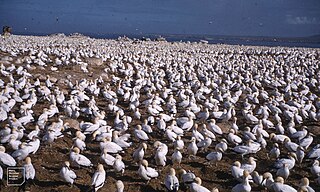 W
WMalgas Island is a small, 8.3 hectares, uninhabited island lying in the northern part of the entrance to Saldanha Bay, in the Western Cape province of South Africa. It lies about 800 metres (2,600 ft) from the mainland in the Benguela upwelling system. It is circular in shape and flat, with the highest point about 9 metres (30 ft) above sea level. It is known for its large breeding colony of Cape gannets.
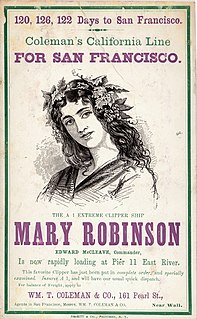 W
WMary Robinson was an 1854 medium clipper in the San Francisco, India, and the guano trades. She was known for having spent an entire month attempting to round Cape Horn in bad weather.
 W
WOmega was a four-masted, steel-hulled barque built in Greenock, Scotland in 1887. In 1957 Omega became the last working cargo-carrying square-rigger afloat. She carried oil, guano, nitrate, wheat, and other goods. She sank in 1958, ending that age of sail.
 W
WJohn T. Arundel was an English entrepreneur who was instrumental in the development of the mining of phosphate rock on the Pacific islands of Nauru and Banaba. Williams & Macdonald (1985) described J.T. Arundel as "a remarkable example of that mid-Victorian phenomenon, the upright, pious and adventurous Christian English businessman."
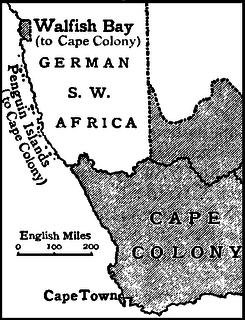 W
WThe Penguin Islands are a historical group of mostly scattered islands and rocks situated along a stretch of 355 kilometres (221 mi) along the coastline of Namibia. Not forming a geographic whole, the Namibian government formally lists them as the Off-Shore islands. Their name comes from the presence of African penguins which inhabit the coastal region surrounding Namibia and South Africa.
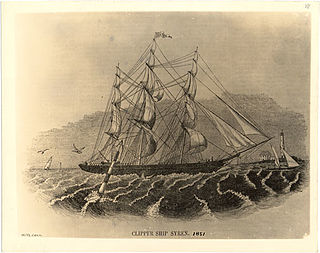 W
WSyren was the longest lived of all the clipper ships, with a sailing life of 68 years 7 months. She sailed in the San Francisco trade, in the Far East, and transported whaling products from Hawaii and the Arctic to New Bedford.
 W
WWestward Ho! was an 1852 clipper that made two very fast passages to San Francisco; 100 days from Boston and New York City. She had a very close race with Neptune's Car, and ended her days in the coolie trade.
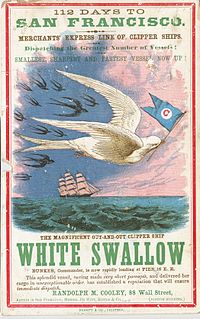 W
WWhite Swallow was an extreme clipper built in Boston in 1853 for the California trade.
 W
WThe Wreck Reefs are located in the southern part of the Coral Sea Islands approximately 450 km East Nor East of Gladstone, Queensland or 250 km east of the Swain Reefs complex they form a narrow chain of reefs with small cays that extends for around 25 km in a west to east line